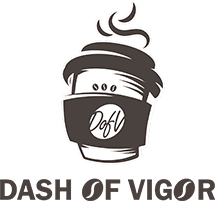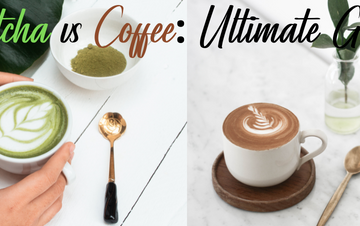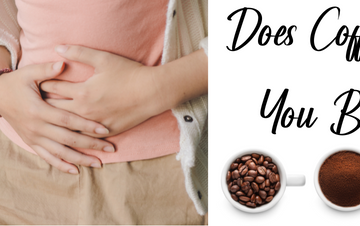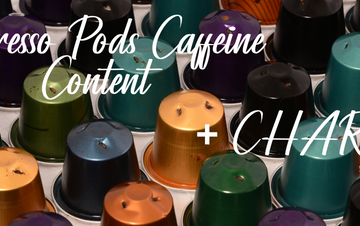What Is a Bicerin and How to Make It?
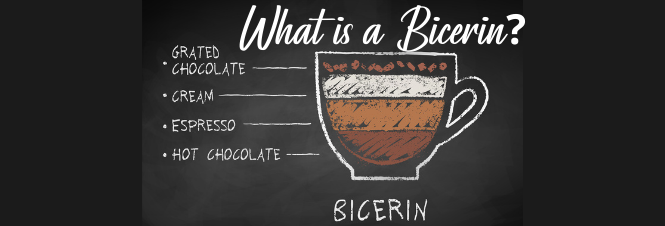
What is a Bicerin coffee, and is it some kind of Mocha? Have you ever drunk such a beverage? I will be surprised if you are. It is very rare to find it if you are not in Italy.
In this article, I will represent the Bicerin coffee, where it came from, and how you can prepare it at home.
Let’s not procrastinate anymore and get started.
TABLE OF CONTENTS:
- What Is a Bicerin?
- Is It Similar to A Pousse Coffee?
- The History of Bicerin
- Famous Local Admirers
- Bicerin Coffee Recipe
- Tips for A Successful Bicerin
- Best 3 Cafes for Bicerin
What Is a Bicerin?
The drink, founded in Turin and pronounced “bee-chay-reen,” has the appearance of a layered mocha. It’s similar to a blend of European-style hot chocolate, espresso, and heavy whipping cream in texture.
The distinction is that, unlike a regular mocha, this one is delivered layered in a tiny glass, with each component meticulously put. According to local legend, the term “bicerin” translates as “small glass” in the area’s dialect, referring to the customary drinking cup of the region.
Instead of cocoa powder, European-style hot chocolate is used to create this drink. Unlike a typical mocha, it has a ganache-like texture rather than the powdery texture of a standard mocha, and it is served hot. A nearly exact match exists between the sizes of a small cappuccino and a triple shot of espresso and a bicerin.
Is It Similar to A Pousse Coffee?
Cocktails, known as “pousse cafés,” have been mostly overlooked in recent years. These cocktails were developed as a digestif, or an after-dinner, after-coffee drink. The phrase is plainly French, meaning “push coffee” or “coffee chaser.” The baristas use the back of a spoon to carefully stack the ingredients in the correct order.
Bicerin looks similar to that. This order we can see outside the glass is phenomenal, and it takes your look when you grab the menu. Of course, you have to be very careful when you prepare it at home if you want to see the same effect. Even though bicerin does not contain any alcohol, French people named it “pousse café” because of its look.
The History of Bicerin
Caffè Al Bicerin’s (Piazza Della Consolata 5) first location in Venice was a grand mansion in front of Santa Consolata church when it opened in 1763. There were only women in charge of everything in this place.
Carlo Promis designed the palace where our Al Bicerin Caffè initially opened in 1856. He added mirrors, lights, and the swinging marble and wood counter with shelves for ingredients and confetti. Today it still looks like the first day of its opening.
This is where the Bicerin was conceived, and it’s often considered the finest of the several options in Turin.
There was a prototype of the modern “bicerin” in the 18th-century “bavareisa,” a Turin drink containing coffee, chocolate, and milk, sweetened with syrup and large glasses.
Those three elements were individually presented when it was first made in Bicerin’s original ceremony. Still, in the 19th century, they were all combined in one glass and offered three different ways: ‘n POC ‘d tut’, which translates to “a little bit of everything,” or “a little of everything.”
Initially served in a tiny glass (called a “bicchiere” in Italian) without a handle, the second variant became the most popular and is still known today as the “bicerin”.
Famous Local Admirers
Camillo Benso, Count of Cavour, Giacomo Puccini, and Pablo Picasso boosted the drink’s appeal.
Stefani-ancient Mondo’s city guide “Torino e I suoi dintorni” states that bicerin is his favorite morning drink. He mentioned that ministers, judges, and academics were happy to pay three cents to fill their stomachs cheaply.
Only the rich and well-known were able to savor this nutrient-packed beverage before the clock struck 12. It was a favorite of notable figures like statesman Camillo Benso di Cavour, former queen Maria Josè of Italy, King Umberto II of Italy, Italo Calvino, and Italian composer Giacomo Puccini.
A table beside the church’s entryway, with Cavour’s Bicerin, had sat and waited for the royal family when they visited the Santa Consolata sanctuary. Three Lira coins bought the popular drink for 15 cents until December 5th, 1913, when the cost went up to 20 cents. In “Torino e I torinesi,” Alberto Virgilio writes that “the typical tiny glass that provides for a wholesome snack” costs just 20 cents.
The warm chocolate was not considered “food”. After that, churchgoers could indulge without feeling guilty or immoral, making it a popular hangout for hungry people after Mass or even during Lent.
Other World-wide Admirers
Bicerin was a must-see in Turin for Alexandre Dumas père. Carlo Campanini, another actor with a penchant for the beverage, was a frequent companion of Erminio Macario’s. For Ernest Hemingway, the drink was one of the 100 things worth defending at any cost. In his historical book “The Prague Cemetery,” Umberto Eco devotes a lengthy paragraph to the Piedmontese delicacy and the Caffè Al Bicerin. The German philosopher Friedrich Nietzsche was also among the fans of this beverage.
Bicerin Coffee Recipe
Ingredients
- Finely chopped dark chocolate (100 grams)
- 250 ml of whole milk
- A double shot of espresso
- 250 ml whipped double cream
- Sugar to the flavor
Method
- Add the chocolate to the warm milk once it has been heated through. Slowly thicken the mixture by often stirring until you dissolve the whole chocolate.
- Before pouring the chocolate into a small mug, let it cool for a few minutes. Because of this, it is best to use a small jar for pouring into the glasses.
- Divide approximately a third of the chocolate mixture equally and pour it into each glass.
- The espresso will be poured into the small mug before being sweetened if desired.
- Using a spoon or ladle, slowly pour the espresso into the glass so that the layers remain intact. As the glass fills, raise the spoon higher in the air.
- Top with a dollop of whipped cream.
If you want, you may top it with cocoa powder or finely chopped chocolate. You can also sprinkle coffee grounds on the top of your bicerin.
Tips for A Successful Bicerin
- Traditional Bicerin chocolate is creamy and thick, and this is how it has always been made. You may either go for a more dense beverage or create your own chocolate with less milk than the required amount.
- What could be better than a Lavazza mix from Turin, the place that Bicerin calls home? Choose Lavazza’s Tierra or Pienaroma blends if you’re looking for a more delicate scent. Combinations with more Robusta, such as Top Class or Crema e Aroma Blue, are excellent for people who want the more traditional flavor of espresso.
- When slurped, whole milk has a better and more appropriate texture to our beverage. Milk foam or whipped cream are other options, but they don’t have the same authentic taste.
- When making Bicerin, the Italians prefer its bittersweet taste without the extra sugar.
- At some Turin coffee shops, baristas add cinnamon to the whipped milk (like a cappuccino) or mix it with chocolate. Dare to eat cinnamon if you enjoy the flavor.
Best 3 Cafes for Bicerin
How do the Torinese drink bicerin? I’ll present you three cafés in Torino that provide the greatest bicerin in the city.
Caffè Mulassano
To get there from the Palazzo Reale di Torino in less than five minutes, you may stroll through the arcades of Piazza Castello to Caffè Mulassano. This café has been open since 1925. The Torino café is usually available from 7:00 a.m. until 12:00 a.m., which means people may come here for breakfast, lunch, or a late-night snack.
Caffè Mulassano’s bicerin is silky and rich in chocolate flavor. Yet, when combined with the espresso, it has no overpowering sweetness. Make your day even better with a croissant filled with hazelnut chocolate paste.
Caffè Mulassano has a traditional and pleasant atmosphere. Many Italians like to merely lean on the bar for a quick bicerin!
Caffè Al Bicerin Dal (1763)
Caffè Al Bicerin, with a long history and a strong reputation, is nearly a must-visit in Torino. As it is now, the café was once a little business that faced the Consolata Sanctuary when it was founded in 1763. To describe the emergence of bicerin as “innovation,” Caffè Al Bicerin would argue it was a development of the Torino café of the 18th century.
Here, the espresso flavor of the bicerin blends wonderfully with the hot chocolate and milk, creating a fantastic taste experience. People would get together and share some biscuits and brioches to pass the time.
Caffè Al Bicerin is a modest yet friendly space with just 6-7 tables. There’s often a line out front of the café. That’s because so many people come here as soon as the doors open for a glass of bicerin. Enjoy your seat if you’re lucky enough to have one!
Caffè Baratti & Milano
Caffè Baratti & Milano, one of Torino’s oldest and most renowned cafés, opened in the Galleria Subalpina in 1875. It started off as a bakery and now offers the Torino hazelnut chocolate gianduiotto and the popular bicerin.
Caffè Baratti & Milano’s bicerin is thicker and less lactose-free. Many people come here for breakfast, lunch, or dessert.
Baratti & Milano’s location in Pietro Carrera’s architectural masterpiece Galleria Subalpina is a testament to the city’s eclecticism. It also links Place Castello and Place Carlo Alberto, two of Torino’s most attractive squares.
I advise you to go to Italy and visit all these fantastic places! You will feel the vintage vibes and the taste of bicerin everywhere.
